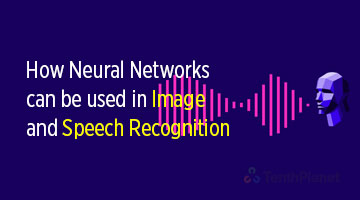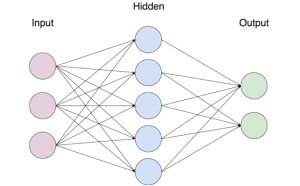How Neural Networks can be used in Image and Speech Recognition

I. Introduction
Artificial Neural Networks are the computational models inspired by the human brain. Many advancements have been made in the field of Artificial Intelligence, including Voice Recognition, Image Recognition, Robotics using Artificial Neural Networks.
II. Concepts of Neural Networks
What is Neural Networks? To understand this in a simple way, As a child, we used to learn the things with the help of our elders, which includes our parents or teachers. Then later by self-learning or practice we keep learning throughout our life. Scientists and researchers are also making the machine intelligent, just like a human being, and ANN plays a very important role in the same due to the following reasons;
- With the help of neural networks, we can find the solution of such problems for which algorithmic method is expensive or does not exist.
- Neural networks can learn by example, hence, we do not need to program it at much extent.
- Neural networks have the accuracy and significantly fast speed than conventional speed.

A typical Neural Network contains a large number of artificial neurons called units arranged in a series of layers.
- Input Layer – It contains those units (Artificial Neurons) which receive input from the outside world on which network will learn, recognize about or otherwise process.
- Output Layer – It contains units that respond to the information about how it’s learned any task.
- Hidden Layer – These units are in between input and output layers. The job of hidden layer is to transform the input into something that output unit can use in some way.
Application of Neural Network’s:
- Speech Recognition – Speech occupies a prominent role in human-human interaction. Therefore, it is natural for people to expect speech interfaces with computers. Artificial Neural Network is playing a major role in this area and ANN such as Multilayer Networks, Kohonen Self-Organizing feature map are actively used in the area of Speech Recognition.
- Signature Verification Application – Signatures are one of the most useful ways to authorize and authenticate a person in legal transactions. Signature verification technique is a non-vision based technique. For this application, the first approach is to extract the feature or rather the geometrical feature set representing the signature. With these feature sets, we have to train the neural networks using an efficient neural network algorithm. This trained neural network will classify the signature as being genuine or forged under the verification stage.
- Human Face Recognition – It is one of the biometric methods to identify the given face. It is a typical task because of the characterization of “non-face” images. However, if a neural network is well trained, then it can be divided into two classes namely images having faces and images that do not have faces.
- Classification and Optimization Problems.
- Prediction and Financial Analysis
III. Conclusion
Artificial Neural Networks are powerful models that have a wide range of applications. I have covered a very few of them in this blog, but, usually ANN have far-reaching applications across many different fields in medicine, security, banking/finance as well as government, agriculture and defence.
